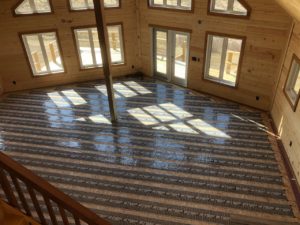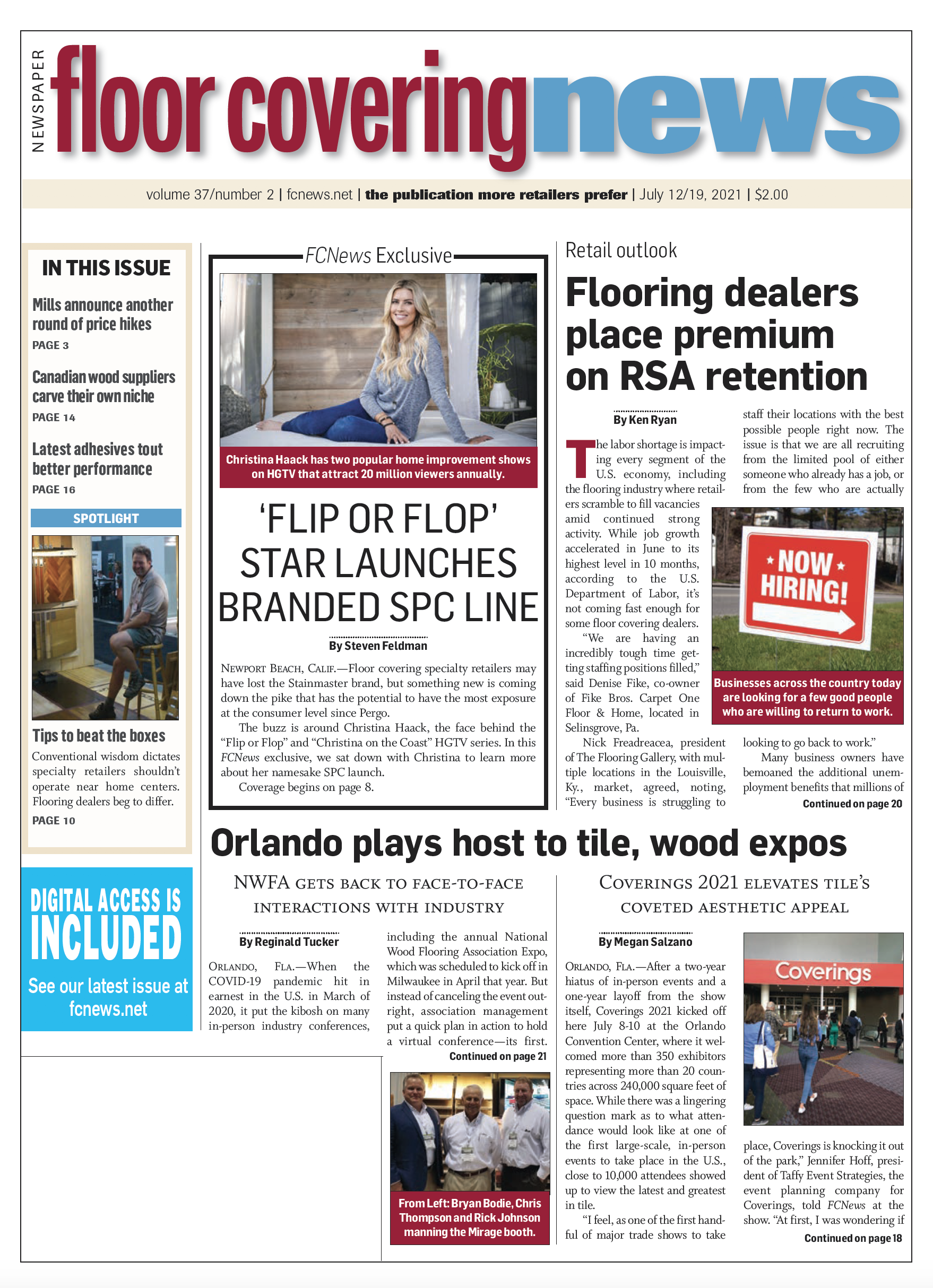When custom home builder, George Royce, was looking for a radiant subfloor heating system for his eco-friendly, ranch-style home in Wellington, Nev., he looked high and low for a product that was energy efficient, simple to install, long lasting and, of course, dependable. He found a product with all those attributes and much more when he stumbled upon Step Warmfloor, an innovative radiant heating system with self-regulating properties.

“When I discovered the Step Warmfloor system, it was eye-opening,” Royce told FCNews. “I looked at a few different types of floor heating systems— hydronic, electric cable, etc., but none matched the performance of Step Warmfloor, which is based on polymer radiant heating technology.”
Electric cable systems, Royce said, typically require two and a half times more energy and wattage than Step Warmfloor, while most hydronic heating systems, he found, are two times more expensive to put in and operate. “Step Warmfloor is 50% easier to put in and basically has no maintenance—you just lay the rolls out, put the floors down and go about your business,” he explained.
How Step Warmfloor works: The system employs a self-regulating heating element embedded within the rolls. The positive temperature coefficient (PTC) nanotechnology employed in the system allows the elements to use maximum power to heat up in cold conditions but decrease electrical consumption as the environment warms up. Operating on a 24-volt AC/DC platform, the heating system warms the ambient air in a space from the ground up. This allows the homeowner to maintain a comfortable environment, resulting in a system that is not only energy efficient but won’t overheat. Another advantage is the system, which is controlled by thermostat, can be connected directly to renewable energy sources such as solar power.
Step Warmfloor is designed for use under most “non-conductive” flooring surfaces—ceramic, porcelain tiles, natural stone, hardwood, laminate and even carpet. Utilized in Europe for several decades prior to its introduction to the U.S. in the late ’90s, the Step Warmfloor system has been providing tangible benefits for end users and installers alike.
“Normally, with radiant heat, you have water in the tubing or electric cables,” explained Monica Irgens, president and owner of Maryland Heights, Mo.-based Electro Plastics, maker of the Step Warmfloor system. (Her husband, Stefan, invented the product in Norway back in 1981.) “Our system, which is made from semi-conductive plastic, is a very thin mat—about 3/64 of an inch. The element used in the product itself is about 12 inches wide so you can put it over the whole floor. And because the mat is so thin, you can install it under any type of flooring—it doesn’t elevate the height of the flooring so much. This is very important, especially when you are remodeling.”
But it’s the product’s self-regulating capability that’s one of the key standout features, according to the company. That’s due in large measure to the product’s carbon content, which confers certain “smart” properties as it heats up. As Irgens explained: “If I’m sitting in a certain area on the floor, for example, or if the sun is especially strong in one area of the room, then the system reacts and generates less heat. But when I open the door to another area and cool air comes into the room, then it heats up. This feature is especially useful where the homeowner puts down rugs or heavy furniture; you don’t have a problem with overheating with this system.”
These design features, according to Irgens, make the Step Warmfloor system more energy efficient (and a lot less cumbersome) than some tradition subfloor heating systems. “With water tubing heating systems, it’s much more complicated and the homeowner requires a lot of materials such as tubing, a boiler, etc.,” she stated. “Compared to systems that utilize electric cables, our system is much easier to install and more efficient. You’re only using the energy you need at that time to maintain a certain temperature in the room.”
Spreading the word
Clients like Jim Betty, who manages a 19-unit apartment complex in Missoula, Mont., attested to the efficiency of the system. Back in 2017, he completed a renovation of every unit on site—all of which are now heated with the Step Warmfloor system. “We have had very satisfactory renters regarding heating comfort,” Betty said, adding that each apartment in the complex has its own metering, and tenants pay for their individual heating bill along with their rent. “Everyone is pleased with the low energy bills.”
Royce, the Nevada-based custom builder, is also a believer. In fact, after many successful projects using Step Warmfloor, he became an authorized distributor. In this capacity, he has trained many professionals, including electricians and contractors, on the virtues of the system. What seals the deal for many users is the significant savings Step Warmfloor provides.
As a case in point, Royce referenced a 208-square-foot bathroom Step Warmfloor installation estimated at around $3,000—a fraction of what an electric cable system would be, Royce stated. Running 24/7 for a full season (or several months), the Step Warmfloor system costs less than a buck a day to operate.
“Eight hours of operation for the same installation using an electric cable system would be about $1.55 per day or $46.50 per month for a total of $565.75 per year,” he said. “With Step Warmfloor, the cost would be $23 a month or $138 per season. Do the math; we can prove it works all day long.”
Another of Royce’s projects—this one involving a renovation in a well-known health spa in Reno—also resulted in positive results. But it took a leap of faith on the client’s behalf. The project, which entailed the installation of the spa room floors as well as heated and contoured bench seats, was at first met with some skepticism by the project manager. As Royce recalled: “The initial attitude of the client was, ‘I hope it works!’ But when I got the system all in and running, he couldn’t believe it. I said to him, ‘Go ahead, pick a place on the bench and put your butt down.’ He said it was the softest, most gentle heat he ever felt.”

